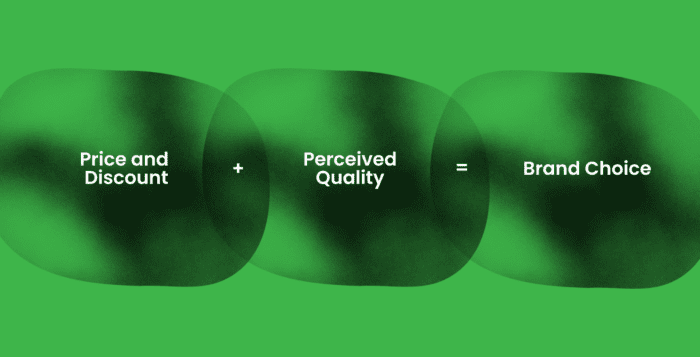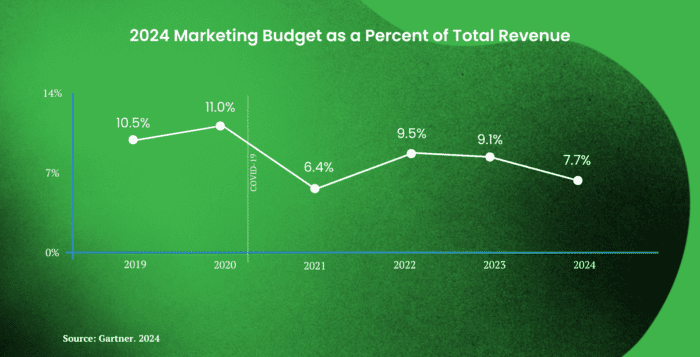We’ve gathered data and insights from industry leaders like Google, Meta, Pinterest, Gartner, eMarketer, and Vericast to paint a clear picture of this year’s holiday marketing landscape.
Since 2020, we have been navigating a sea of uncertainty every year, and 2024 is no different.
If you are a retailer, I’m sorry to break it to you but, you are facing a perfect storm of challenges this holiday season. Economic pressures, fierce competition, and tighter budgets are just the beginning. Add to that the ever-evolving consumer expectations and the rapid advancements in technology, particularly in AI, and it’s clear that staying relevant is more challenging than ever.
The old playbook of a steady year-round engagement followed by a big push in November is no longer enough. Every touchpoint counts, and retailers must be strategic about when and how they engage with shoppers throughout the season.
A Shorter Holiday Season: The Time Crunch Is Real
This year, the holiday shopping window is more compressed than in previous years.
Cyber Monday falls in December and there are five fewer shopping days between the Cyber Five and the end of December.

This means that more holiday sales will occur in December, and the pressure is on to maximize every single day. Be prepared to engage with consumers throughout this shortened period, ensuring that your marketing strategies are timed perfectly to capture every opportunity.
From Black Friday to Black Fall
If you are waiting for the Cyber Five (the five days between American Thanksgiving and Cyber Monday) to launch your holiday marketing strategy, you will be too late. The holiday shopping season is starting earlier each year. In 2024, we saw 34% of U.S. consumers beginning their holiday shopping as early as July, up from 28% the previous year (Google).
Moreover, 60% of consumers said they’d be willing to purchase right now if they were confident they found the right item (Google).
According to Vericast, the primary reasons behind the earlier shopping trend in 2024 are the desire to save money through sales and discounts, along with the need to spread out expenses over a longer timeframe.
This underscores the importance of being present early in the shopping season. Focus on building brand connections, expanding your database of potential clients, and raising awareness about your products well before the traditional peak shopping days. By engaging consumers early, you set the stage for stronger sales throughout the holiday season.
However, with the early start comes a new challenge: eMarketer predicts that by November 1st, 67% of consumers will already feel overwhelmed by holiday marketing—well before the peak shopping days even arrive. To avoid losing their attention, it’s crucial to strike the right balance in your messaging. Start your marketing early, but focus on clearly communicating your products’ value without diving too deep into holiday themes right away. The goal is to turn browsers into buyers while keeping your audience engaged and receptive.
December’s Big Push
A significant 36% of U.S. holiday sales occur between Cyber Monday and Christmas Eve. As December kicks off, many shoppers still have half of their holiday shopping left to do. (Google)

In fact, in 2023, eight December shopping days surpassed Cyber Monday in sales volume. With more than two-thirds of holiday shoppers knowing what gifts they want by the start of December, it’s vital to stay top-of-mind early and maintain a strong presence throughout the peak shopping day of December.

Your ads should target last-minute shoppers, emphasizing availability and convenience—think expedited shipping, buy online pick-up in-store (BOPIS), and gift card options.
And, don’t stop your efforts once Christmas is over.
Interestingly, 41% of Holiday shoppers keep buying past the holiday season (Meta) and 45% of consumers say they enjoy shopping during the time after Christmas (Google).
Extend your marketing beyond Boxing Day to capture these late-season opportunities and keep your brand in front of shoppers looking to indulge after the holiday rush. Additionally, with lower competition at the end of December, the cost per thousand impressions (CPM) drops significantly, making it an ideal time to run a highly cost-effective campaign.
Doing More with Less
In 2024, CMOs are navigating a landscape where marketing budgets have been tightened significantly, with average budgets dropping to 7.7% of overall company revenue, down from 9.1% in 2023, according to Gartner. This reduction means that marketers like you are under more pressure than ever to deliver impactful results with fewer resources.
Interestingly, despite the tighter budgets, there has been an increase in digital paid media spending, with search, social, and display emerging as the top channels. This trend suggests that retailers are doubling down on proven tactics, prioritizing investments in areas that offer demonstrable impact.
You will need to be strategic in allocating your limited budgets. Make sure to weed out ineffective campaigns and be particularly stringent on optimization. Every dollar must work harder, meaning underperforming strategies must be swiftly identified and either improved or eliminated. The emphasis will be on running lean, highly optimized campaigns that not only deliver immediate results but also contribute to long-term brand health.
Economic Uncertainty and Consumer Pressure
The pressure on consumers to make the right purchase is at an all-time high. Economic uncertainty and the overwhelming number of choices have made decision-making more stressful for shoppers. In fact, 61% of consumers say they can’t afford to make the wrong choice this holiday season. (Google)
Simplicity and Reassurance
60% of U.S. consumers admitted to abandoning a purchase altogether when faced with too many options or information. (Google)
For retailers, this means that simplifying the purchase process and offering clear, confidence-boosting product information is more crucial than ever. Shoppers are looking for reassurance that they are making the right decision—so make sure your messaging is clear and your value proposition is front and center.
In recent years, brands have shifted their marketing strategies to reassure consumers they’re getting the best possible deals, especially during major events like Black Friday. For example, BEIS highlights that their Black Friday sale is the “ONLY sitewide sale of the year,” creating a sense of urgency and exclusivity. Similarly, Glossier promotes Black Friday as the “biggest sale of the year,” emphasizing the peak value for shoppers. This approach builds consumer confidence, ensuring customers feel they’re making the most of a rare opportunity, not just another discount.

Pricing and Promotions: More Important Than Ever
As we head into the 2024 holiday season, pricing and promotions are more important than ever. In fact, their significance has grown by 5% compared to 2023, reflecting the heightened sensitivity of consumers to finding the best deals during these economically uncertain times. (Google)
In the Canadian market, the perception of value is particularly nuanced. According to Google data, clearance items top the list as the most valuable offers in the eyes of consumers, suggesting that shoppers are keen on finding substantial savings on last season’s or overstocked products. Following clearance, in order, percentage discounts (such as 20% off), dollar-off deals (e.g., $10 off), multi-buy offers like Buy One, Get One Free (BOGO), bundle deals, and limited-time offers entice shoppers.
But it’s not just about slashing prices. Value for money and high quality are the two most important factors influencing brand choice, regardless of how loyal a consumer feels to a particular brand.

This insight is crucial for retailers: while discounts can attract shoppers, the perceived quality of the product will often seal the deal.
To meet these expectations, retailers should focus on more than just aggressive discounting. Yes, promotions are essential to drive traffic and sales, but pairing those promotions with a strong emphasis on quality can help distinguish your brand in a crowded marketplace.
One Gift For You… One Gift For Me
The trend of self-gifting is gaining momentum again this holiday season. According to Vericast’s 2024 Holiday Retail TrendWatch, 41% of consumers plan to splurge on gifts for themselves, even as they tighten their budgets in other areas. This presents a unique opportunity for retailers to tap into this growing trend and personalize the shopping experience in meaningful ways.

In an environment where consumers are more selective with their spending, relevance is key. Brands can leverage customer data to make shopping more tailored and enjoyable. For instance, 73% of consumers expressed a desire for brands to suggest products that complement their previous purchases, while 69% wanted recommendations based on their browsing history. (Google)
Artificial Intelligence is Transforming Ad Platforms
The rise of artificial intelligence is revolutionizing ad platforms, offering retailers new tools to enhance campaign performance and stay competitive. You must keep pace with these advancements to avoid missing out on valuable opportunities.
For example, Meta Ads is pushing its Advantage+ products, leveraging AI to boost performance. Their offerings include Advantage+ Catalog Ads, which use AI to deliver the most relevant products from your catalog to those most likely to purchase. Additionally, Advantage+ Creative employs AI to automatically generate enhanced creative assets at scale, including text variations, automatic image extensions, and background image generation.
On the Google front, Performance Max campaigns continue to demonstrate their value, making it easier for retailers to reach their audience across all Google properties. Google is also expanding access to Generative AI, a powerful tool that accelerates the creation of new creative assets. Additionally, the platform has relaunched its Merchant Center with new features designed to help brands showcase their products across Google’s vast network.
Pinterest is also stepping up with the launch of its new AI toolset, Performance+. This suite integrates Pinterest’s automation and AI capabilities to streamline campaign creation and maximize ad impressions.
As the holiday season approaches, we recommend testing these AI-driven features to determine what works best for your business. By experimenting with these tools now, you’ll be better prepared to optimize your campaigns when it matters most.
In conclusion, Embrace the Change to Succeed This Holiday Season
The 2024 holiday season presents a unique set of challenges and opportunities for retailers. From a compressed shopping window to the rising importance of AI in marketing, it’s clear that the traditional strategies won’t cut it this year. To stay competitive, retailers must adapt to the shifting landscape—starting early, engaging consistently, and leveraging the latest technology to create personalized and impactful customer experiences.
If you could use some extra support this holiday season, don’t hesitate to reach out to us.
Subscribe to The Shift Factor
Our newsletter keeps you in the know on marketing’s biggest shifts and real examples of brands adapting.
ABOUT THE AUTHOR
Franz Fontaine
Franz has over 20 years of media experience. He is an expert in brand positioning, media planning in both digital and traditional media, and multi-channel strategy development.





Share this: